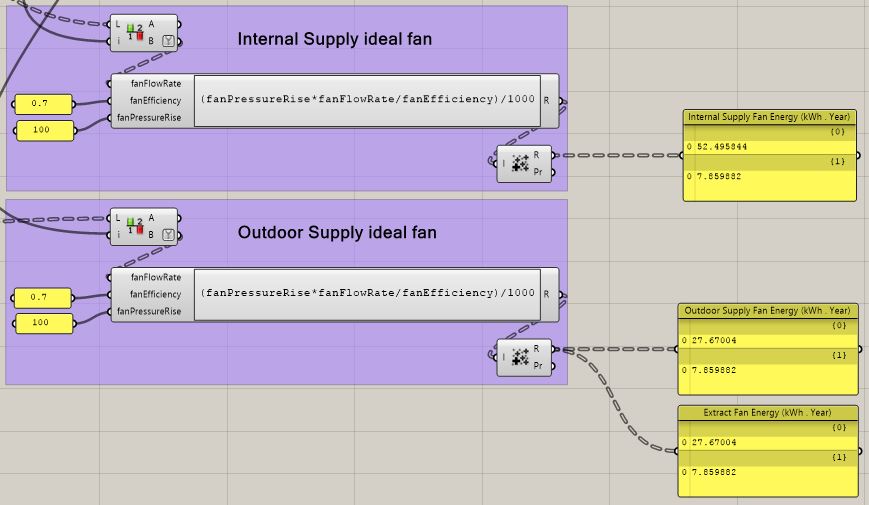Hi @SaeranVasanthakumar, many thanks for your detailed reply.
I had a look at the available outputs for Internal Air Loads in the RDD file as you have suggested and you are right, Fan Electric is not available as output.
However I have found in the outputs the Outdoor Air Inlet Flow rate, which seems not the same flow rate that the standard “Honeybee_Read EP HVAC Result” gives. Do you think is possible to obtain a theorethical fan energy output postprocessing the hourly Outdoor Air Flow rates result?
I’ve done a quick test, but I’m not sure the assumptions are correct. Would the total fan power be:
Internal Supply fan + Outdoor Supply fan*2 (this times two to mimic an extract fan?)
See attached screenshot and script of the test. The model has two zones, both with Ideal Air Loads assigned, but one has heating and cooling setpoints set in a way that heating and cooling are never triggered. As you can see, interestingly there is still a minimum ventilation flow rate to meet the ventilation criteria set for the zone, which means that postprocessing this output would give the fan electricity also for “virtually unconditioned” zones using Ideal Air Loads. Do you think this assumption is correct?
Fan for Ideal Air Load system.gh (570.8 KB)
